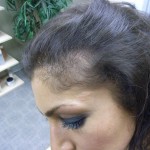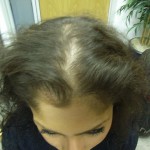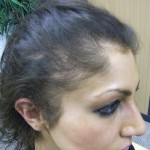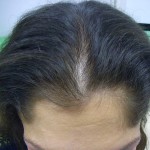30.10.2008
in HAIR LOSS SCIENCE
Next Generation of Genetic Test For Baldness Unveiled By HairDXIRVINE, Calif.CA-HAIRDX
IRVINE, Calif.–(BUSINESS WIRE)–
Pharmacogenomics research and development innovator PharmaGenoma, Inc. and its subsidiary HairDX, LLC (www.hairdx.com), today unveiled the next generation of its genetic screening test for male pattern baldness. The HairDX test is available immediately thru qualified physicians’ offices.
Using the HairDX test, a physician can tell a man who tests positive for the high risk genetic variant that he has approximately a 70% chance of going bald. Similarly, a physician can tell a man who tests negative for the high risk genetic variant that he has approximately a 70% chance of not going bald.
‘The next generation test report is based on a pooled data model from multiple peer reviewed studies of over 2,000 Caucasian men. The studies demonstrated the association between the genetic variants measured by the HairDX genetic screening test and the development of Androgenetic Alopecia in men,’ says Andy Goren, HairDX Chairman and Co-Founder.
In addition to the improved clinical validity and utility, the HairDX genetic test now includes genetic markers on the Androgen Receptor (AR) gene as well as on Chromosome 20.
“A recent study demonstrated that Propecia©, the only FDA approved oral prescription medication for the treatment of male pattern baldness, is effective at preventing hair loss over a period of several years. Doctors using the HairDX genetic screening test can offer a treatment plan to prevent hair loss in men of all ages before any visible signs of hair loss,” says Dr. Sharon Keene, Chief Medical Officer for HairDX and former Chairman of the Annual Scientific Committee of the International Society of Hair Restoration Surgeons.
Visible signs of hair loss usually mean that a man has already lost up to 50% of their hair. Early detection via the HairDX genetic screening test provides an opportunity for intervention and treatment before it is too late.
The next generation screening test identifies approximately 70% of men that will benefit from early treatment. As with any screening test, some men will be identified for treatment even though they may not go bald. Confirmatory tests by a qualified physician will eliminate unnecessary treatment.
About HairDX, LLC
HairDX, LLC is a subsidiary of PharmaGenoma, Inc. Based in Irvine, CA, HairDX (www.hairdx.com) HairDX is an FDA registered pharmacogenomics research and development company. HairDX markets the first genetic test for male and female hair loss. The company is dedicated to the research and development of new prescription based therapies tailored to an individual’s genetic make up. HairDX uses only CLIA certified laboratories (Clinical Laboratory Improvement Amendments) to perform the genetic analysis.
Among HairDX leaders is William V. Murray former Division President of the Molecular Biology Division of Applied BioSystems, Inc., who formerly served in various executive leadership positions within Medtronic, Inc., Andy Goren former CEO of MobileWise, Inc. and GeePS, Inc., David Teckman, former CEO of Sutura, Inc, a medical device company, Professor Doron Lancet, PhD, Head of the Crown Human Genome Center at the Department of Molecular Genetics, Weizmann Institute of Science, Dr. Elon Pras, Director of the Institute of Human Genetics, Sheba Medical Center in Tel-Hashomer, Israel, Sharon Keene, MD and President and Medical Director of Physician’s Hair Institute, in Tucson, Arizona and nationally recognized for her pioneering work in the hair transplant field, and Elliott J. Stein, an intellectual property attorney and co-founder of GeePS, Inc.
Do you have Hair Loss Problems, read our Hair Loss Help














